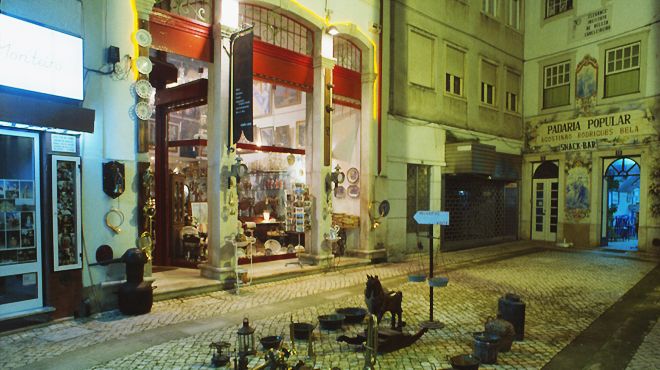Coimbra - Percurso da Alta da Cidade (Tour of the Upper Town)

Coimbra - Percurso da Alta da Cidade (Tour of the Upper Town)
Other
This is the oldest part of the city, composed of steep, narrow streets leading to the top of the hill where the city was born and where the lively student life is now the most dominant feature.
Starting in Rua Ferreira Borges, the Arco de Almedina marks the edge of the old city, where the students lived, as they were not allowed to reside outside the walls, except at the monasteries on the banks of the River Mondego, from where certain teachers came.
If you climb the steps of Rua de Quebra Costas and turn left, you will immediately find the arch and the Palácio Sub Ripas, a 16th-century mansion with a Renaissance façade, designed by the workshop of Jean de Rouen, which, according to tradition, was situated quite close by. A little further on, built upon the foundations of the mediaeval wall, stands the Torre do Anto, reminding us of the Portuguese poet António Nobre (1867-1900), who lived here when he was a student in Coimbra.
Halfway up the hill, you can enjoy the delightful view over the city that almost certainly inspired some of his poems. The tower now houses an art gallery and craft shop. By walking along Rua dos Coutinhos, you will reach the square where the Sé Velha recounts its long history from the time of the foundation of the Portuguese nationality.
After Rua Borges Carneiro, the church of São João de Almedina announces itself as another place that you must stop and visit. Nowadays, this church is part of the Museu Nacional Machado de Castro, the city's most important museum. Make sure that you go inside the building and admire the view from the Renaissance balcony. Notice the steep, narrow streets around you, for it is here that the students have their residences, living in houses known as Repúblicas, each house establishing its own rules and keeping alive the academic spirit.
Leaving the museum, you will find the Igreja de São Salvador on your right, a chance to appreciate yet another Renaissance work of art by Jean de Rouen. The street in which it is situated, Couraça dos Apóstolos, marks the place where the Society of Jesus installed itself in order to build the church that was to become the Sé Nova (New Cathedral).
Further ahead is an imposing entrance, the Porta Férrea or Iron Gate, inviting you to enter into the institution that has been responsible for much of Coimbra's history, the University. This is the place that marks the end of his tour.
Starting in Rua Ferreira Borges, the Arco de Almedina marks the edge of the old city, where the students lived, as they were not allowed to reside outside the walls, except at the monasteries on the banks of the River Mondego, from where certain teachers came.
If you climb the steps of Rua de Quebra Costas and turn left, you will immediately find the arch and the Palácio Sub Ripas, a 16th-century mansion with a Renaissance façade, designed by the workshop of Jean de Rouen, which, according to tradition, was situated quite close by. A little further on, built upon the foundations of the mediaeval wall, stands the Torre do Anto, reminding us of the Portuguese poet António Nobre (1867-1900), who lived here when he was a student in Coimbra.
Halfway up the hill, you can enjoy the delightful view over the city that almost certainly inspired some of his poems. The tower now houses an art gallery and craft shop. By walking along Rua dos Coutinhos, you will reach the square where the Sé Velha recounts its long history from the time of the foundation of the Portuguese nationality.
After Rua Borges Carneiro, the church of São João de Almedina announces itself as another place that you must stop and visit. Nowadays, this church is part of the Museu Nacional Machado de Castro, the city's most important museum. Make sure that you go inside the building and admire the view from the Renaissance balcony. Notice the steep, narrow streets around you, for it is here that the students have their residences, living in houses known as Repúblicas, each house establishing its own rules and keeping alive the academic spirit.
Leaving the museum, you will find the Igreja de São Salvador on your right, a chance to appreciate yet another Renaissance work of art by Jean de Rouen. The street in which it is situated, Couraça dos Apóstolos, marks the place where the Society of Jesus installed itself in order to build the church that was to become the Sé Nova (New Cathedral).
Further ahead is an imposing entrance, the Porta Férrea or Iron Gate, inviting you to enter into the institution that has been responsible for much of Coimbra's history, the University. This is the place that marks the end of his tour.




 Explore
Explore 
 Remember and Share
Remember and Share 


